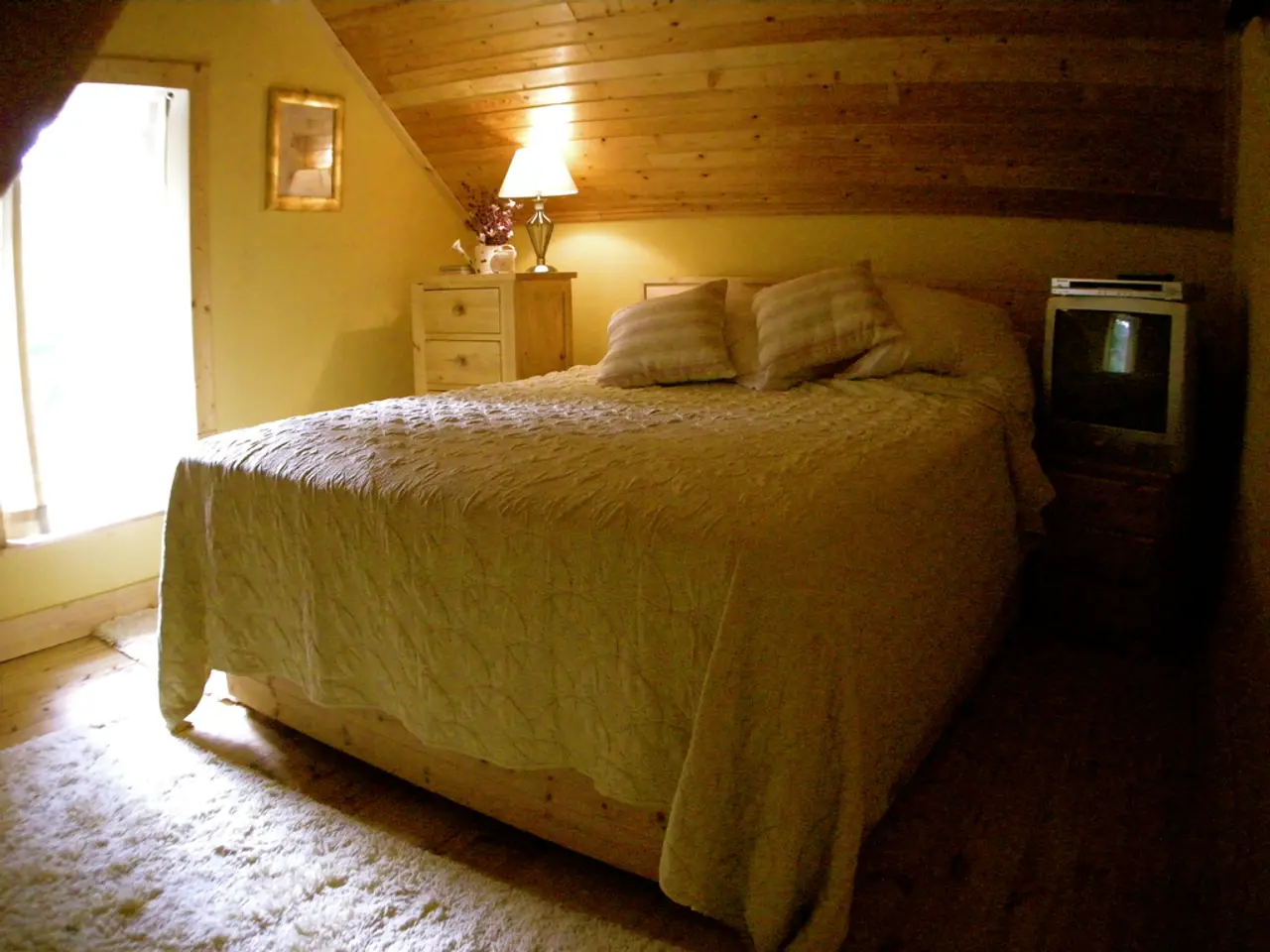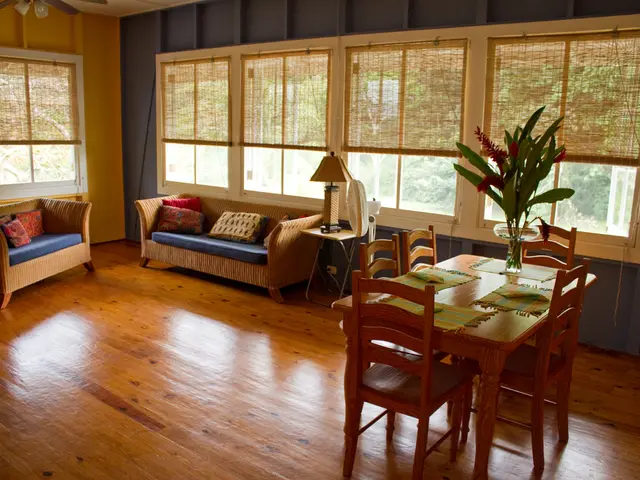'Sleep divorce' refers to a temporary separation of sleep habits in a relationship, aimed at improving sleep quality. Here's how it can be successfully implemented.
In today's fast-paced world, good quality sleep has become a luxury. Relentless schedules and constant screen use have made it challenging for many couples to get the rest they need. However, a growing number of couples are finding a solution in a practice known as sleep divorce.
One such couple is Courtney Brandt and her husband. They have been practicing sleep divorce for improved rest and their relationship. Brandt, a strong advocate for good sleep, values it as essential for living, especially in today's world.
Sleep divorce involves sleeping separately, a practice that has been shown to lead to better sleep quality, improved mood, and enhanced relationships. Dr Faia, a sleep specialist, recommends sleep divorce only when there's a documented medical condition and the other partner has shown significant distress.
Studies show that co-sleeping couples often experience more short-lasting awakenings and lower quality of sleep than those sleeping separately [1][2][3]. Dr Faia suggests hybrid solutions like the Scandinavian method, using separate blankets or custom mattresses, or scheduling alone-sleep nights interspersed with co-sleep nights.
The benefits of sleep divorce are numerous. Couples who practice sleep divorce fall asleep faster, experience fewer interruptions from snoring, movement, or differing sleep schedules, and sleep longer—often gaining about 30-37 extra minutes of rest each night [1][2][3]. This leads to deeper, more restorative sleep that supports physical health such as immune function, tissue repair, and cognitive processing.
With improved sleep, couples typically see less irritability, improved mood, better emotional regulation, higher energy levels, better focus and decision-making, and reduced stress hormone (cortisol) levels [1][2]. Sleeping separately can also reduce bedtime and morning conflicts while promoting appreciation and intentional intimacy activities. Couples often report feeling less resentful and more affectionate after adopting sleep divorce [1][2][3].
Dr Sudhanthira Devi Ramdoss, another sleep specialist, has seen a rising number of cases where clients practice sleep divorce. She emphasizes the importance of open communication for successful sleep divorce. Dr Ramdoss suggests a trial period for practicing sleep divorce, such as two to three times per week.
Space is a common holdback for those considering sleep divorce. However, Brandt suggests defining the two spaces by using two duvets, especially for those without a second room. Rima, a Dubai resident, practices the Scandinavian method and prefers to use a thicker blanket than her husband for personal comfort.
Dr Faia estimates that over one-third of her sleep disorder patients in the past year have resorted to sleep divorce. This practice is not intended to end a relationship, but rather a practical choice to address sleep issues. Dr Ramdoss states the same, emphasizing that sleep divorce is a means to improve sleep hygiene, reduce health risks from poor sleep, and strengthen relationships when co-sleeping becomes a source of conflict or diminished rest.
A 2023 survey by the American Academy of Sleep Medicine found that 58% of adults adjusted their sleep routines to accommodate a partner, 20% occasionally slept in another room, and 15% consistently slept in a separate room. As more couples embrace sleep divorce, it seems that this practice could become a common solution for better sleep and stronger relationships.
References:
[1] American Academy of Sleep Medicine. (2020). Sleep Divorce: A Practical Guide for Couples. Retrieved from https://www.sleepeducation.org/sleep-divorce-a-practical-guide-for-couples
[2] National Sleep Foundation. (2019). Sleep Divorce: What You Need to Know. Retrieved from https://www.sleepfoundation.org/articles/sleep-divorce-what-you-need-know
[3] Mayo Clinic. (2021). Sleep Divorce: When Sleeping Apart Might Help. Retrieved from https://www.mayoclinic.org/healthy-lifestyle/adult-health/expert-answers/sleep-divorce/faq-20058361
[4] National Institute of Neurological Disorders and Stroke. (2021). Sleep Apnea. Retrieved from https://www.ninds.nih.gov/disorders/all-disorders/sleep-apnea-information-page
- Given the challenges of getting adequate sleep in today's world, couples like Courtney Brandt and her husband are turning to a practice called sleep divorce, prioritizing their health-and-wellness and relationships.
- Dr Faia recommends sleep divorce as a solution for couples with documented medical conditions like sleep apnea, provided that it doesn't cause significant distress for the other partner.
- Studies indicate that couples who sleep separately experience better sleep quality, fewer interruptions, and longer sleep duration, leading to improved physical health, mood, and focus.
- Dr Sudhanthira Devi Ramdoss advises open communication and a trial period, such as two to three nights per week, for successful implementation of sleep divorce in a relationship.
- With the growing acceptance of sleep divorce, it appears that this lifestyle choice, rooted in home-and-garden organization and technology such as custom mattresses, may become a trend to improve sleep and strengthen relationships in the UAE and beyond.




